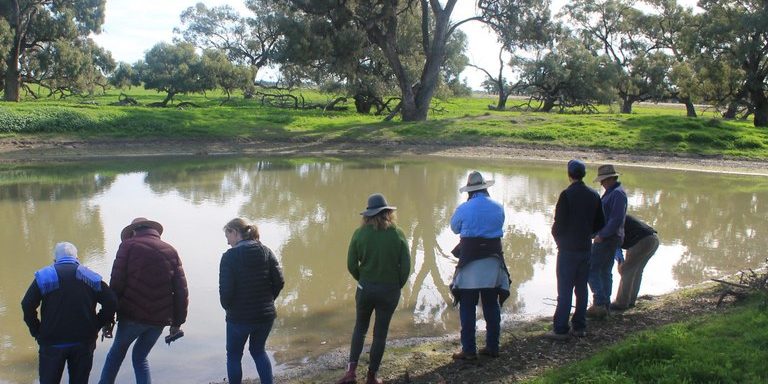Water runoff can fill dams with loose organic materials from the catchment, which can lead to the water becoming unattractive, contaminated, and possibly toxic to livestock. Poor palatability of the water results in less water being consumed by livestock; if livestock are dehydrated, they don’t eat as much and can’t convert their food as quickly, resulting in reduced growth rates.
Hay Plains Landcare hosted a Farm Dam Workshop, led by ecologist Mason Crane of the Biodiversity Conservation Trust. Mason discussed the benefits of healthy farm dams for the environment, biodiversity and livestock health and productivity.
Healthy farm dams can play a similar role to natural wetlands – helping restore biodiversity by providing much-needed wetland habitats for native wildlife. Fenced-off, well-vegetated dams become good habitat for invertebrates, fish, frogs, turtles and birds. These water species then help to improve the dam function by cycling nutrients from the dam into the wider landscape, helping reduce sediment, nutrient, salts and algal levels within the dam.







